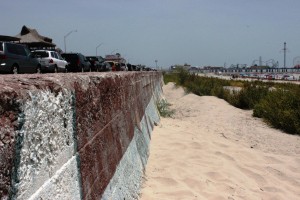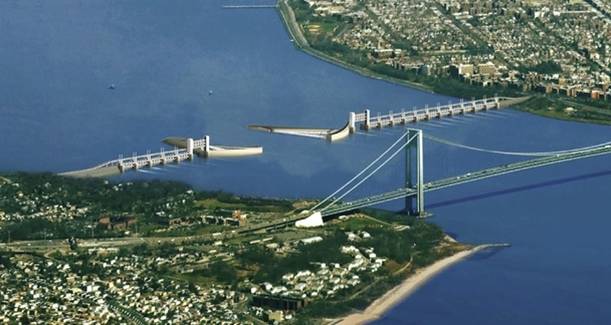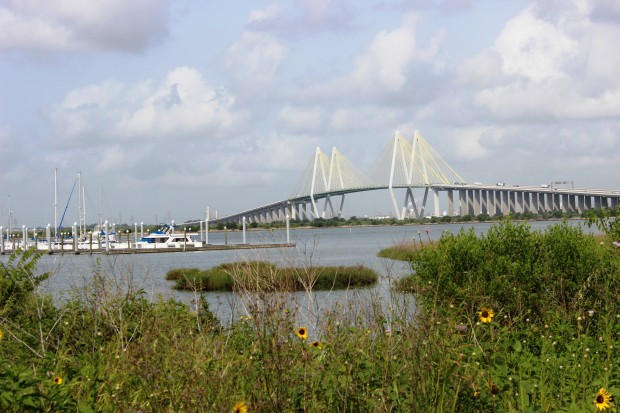Stopping a Hurricane’s Storm Surge: Texas Considers What Will Work

Dave Fehling
The Galveston Seawall was built to protect a portion of the Island after the massive hurricane of 1900
Petrochemical companies are spending billions of dollars to expand facilities along the Texas Gulf Coast. Which means when the next hurricane hits, there will be just that much more expensive infrastructure that could be damaged by the massive amount of seawater — or “storm surge” — pushed inland by the hurricane.
“There’s more development, more industrial development, just more things that need to be protected,” said Helen Young, Deputy Commissioner of Coastal Resources at the Texas General Land Office.
After Hurricane Ike destroyed 8,000 homes and apartment units in Southeast Texas and did $10 billion in overall damage in Harris County alone, researchers said it would be cheaper in the long run to spend money now to build barriers to reduce storm surge flooding from future hurricanes.

Courtesy ARCADIS
Graphic shows how a dike and giant gates would close to block storm surge from causing flooding upstream
Picking a Winner
Texas officials are working with the U.S. Army Corp of Engineers, assessing a number of proposals that includes everything from breakwaters along the Intercoastal Waterway to elevating critical buildings to miles-long levies.
“So it’s a complete range of alternatives,” said Young.
Next month, Young says the Corps will give approval to a whittled down list of proposals.
“And then the proposed measures will be studied in depth over the next year. That will determine what is recommended by the Corp of Engineers,” Young told StateImpact.

Dave Fehling / StateImpact
Bill Merrell at Texas A&M Galveston is the creator of the Ike Dike concept
The most ambitious project is proposed by Bill Merrell, a marine scientist at Texas A&M’s Galveston campus. Called the Ike Dike, it would stretch for 65 miles along the coast, centered on Galveston Island, offering protection to homes on the island as well as petrochemical plants and refineries in Texas City and miles away on the Houston Ship Channel. The estimated cost: $4 to 6 billion.
“To be socially just, you want to protect everybody. And all the studies show that hurricanes and surge really affects the elderly and the poor much more than anyone else,” Merrell tells StateImpact.
What to Protect and at What Cost
He’s drawing a distinction between the Ike Dike and smaller, less costly projects. For example, the “Centennial Gate” proposed by a consortium of researchers organized at Rice University and called SSPEED (Severe Storm Prediction, Education and Evacuation from Disasters).

Dave Fehling / StateImpact
Jim Blackburn with Rice University's storm think tank
“We think that the low hanging fruit is the protection of the Ship Channel. The Ship Channel is hundreds of billions of dollars in economic activity and infrastructure. It’s 150,000 jobs directly,” said Jim Blackburn, a Houston attorney and member of SSPEED.
The gate would be built at a narrow point of the channel just below the Fred Hartman Bridge, staying open most of the time to allow ships to pass through but closing shut when a hurricane threatens.
“We could build for about a billion dollars, a 25 foot levy and gate structure that would protect hundreds of billions of dollars in investment,” and could be paid for locally using bonds, instead of relying on help from the federal government.
That could be key as officials decide how much of the coast should be protected and at what cost.
“In this (fiscal) climate, it’s hard to count on federal assistance, period,” said the Land office’s Young.

The "Centennial Gate" would be built parallel to the Fred Hartman Bridge that crosses the Houston Ship Channel